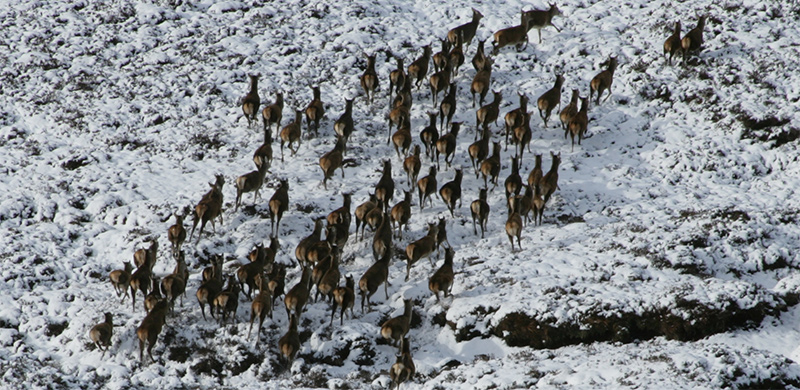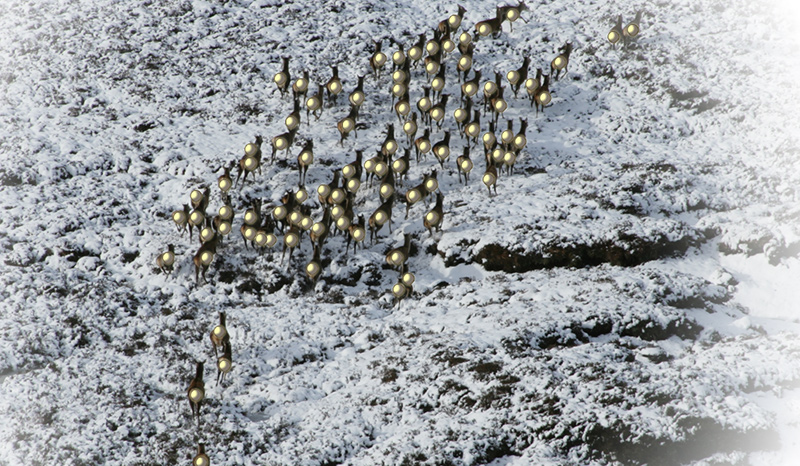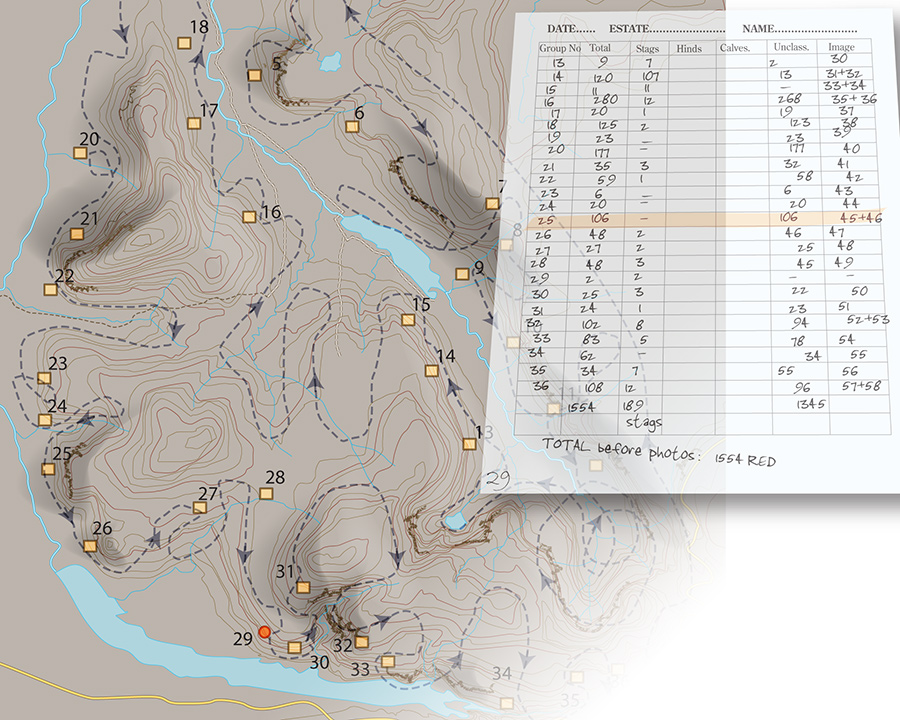
a digital photograph taken from a helicopter, can reveal much greater detail when processed. (near bottom left) a second deer can be seen behind another, and calves may be distinguished from hinds
Planning and communications
The key to the success, accuracy and efficiency of counts, particularly large counts, is in thorough and detailed planning, along with good communication between all involved. The Risk Assessment should apply to all operators
- Ensure that an appropriate Risk Assessment has been carried out and recorded where appropriate*.

Computer software may help count large groups. Each deer in the group can be marked and a different colour used for every 100 deer counted within the group
In addition to carrying out a risk assessment the following checklist should be completed:
checklist | count |
||
| ground | helicopter | ||
| area | area to be counted defined | ||
| woodlands to be cleared identified | |||
| neighbours contacted | |||
| equipment | radios & batteries | ||
| notebooks & pencil | |||
| binoculars/ telescopes | |||
| GPS | |||
| digital camera/ batteries | |||
| maps | |||
| health & safety equipment | |||
| staff clearing woodland brief | woods to clear | ||
| timings | |||
| radio comm protocol | |||
| health & safety procedures | |||
| counters brief | routes to fly/ walk | ||
| which deer to count | |||
| classification to use | |||
| record (nos, age, sex...) | |||
| radio comm protocol | |||
| health & safety procedures | |||
| helicopter pilot brief | routes to fly/ walk | ||
| fuel dumps | |||
| flying hours | |||
| military restrictions | |||
| radio comm protocol | |||
| health & safety procedures | |||
On the day
Prior to commencing counting obtain an up to date weather forecast for the area.
- Ensure all team members are equipped with radios operating on a dedicated channel.
- Agree protocols for radio procedures with the pilot, co-ordinator and wood clearance teams before the start of any count. Send, receive and acknowledge are essential steps. In addition team members should be clear on:
• Definition of terms to be used
• Methods of relaying
• Channel allocation - Immediately after the count:
• hold a ‘de-briefing’ with all involved to determine any potential double counting or areas missed.
• Collect all maps, notebooks, digital images, gps routes to collate data on numbers and locations of all deer sighted and all routes walked or flown.

After the count
It is essential to make most use of the information collected. As well as reporting on the number of deer counted the following should be reported on:
- Area counted
- Deer densities (areas unavailable to deer - fenced / water)
- Map of deer counted and area covered
- Costs (man-hours, £)
- Weaknesses / limitations:
• Planning
• Area counted / woodlands cleared
• Weather / ground conditions
• Observer ability to spot / count / classify / record
• Digital image quality
• Deer behaviour and movement - What could be done better?
What next?
- Disseminate results to neighbours / DMG / SNH**
- Use count to inform deer management in terms of:
• Population size
• Sex ratio
• Likely impact on habitats
